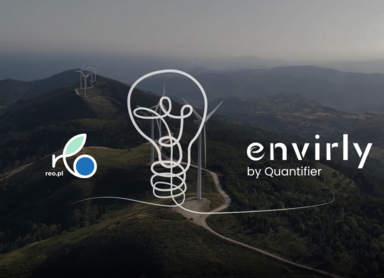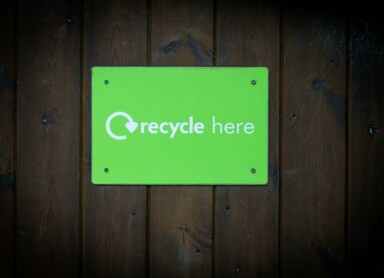Annual energy consumption it Poland. What are the trends?
Energy is an inseparable part of our daily lives, and analyzing its consumption is one of the key issues for the economy, politics, and the environment. Poland, as a country undergoing dynamic development, faces numerous challenges related to growing energy demand and the ongoing energy transition.
The scale of energy consumption in a given country reflects the pace of development in industry, transport, and infrastructure. It also shows how consumer habits are changing and how global trends are affecting local energy markets. Poland still largely relies on fossil fuels — both domestic and imported — to power its energy sector. Although renewable energy sources are playing an increasingly important role, fully aligning with EU policies aimed at reducing greenhouse gas emissions and achieving climate neutrality across the continent, their total share in the national energy landscape still leaves much room for further development.
Annual Energy Consumption in Poland — What Are the Latest Figures?
All European economies, including Poland, face challenges associated with the energy transition process. In 2024, the Forum Energii Foundation published a comprehensive report titled "Energy Transformation in Poland. 2024 Edition", presenting the latest data on energy consumption and forecasts for the Polish energy market.
In 2023, gross electricity consumption amounted to 170.2 TWh, with the industrial sector being the largest final consumer of electricity. The second-largest consumer was households. Fossil fuels — mainly coal, oil, and natural gas — remain the primary energy sources. The share of renewable energy sources (RES) has increased in recent years to 13.2%, mainly due to the development of photovoltaics and wind power. At the same time, primary biomass, mainly wood, still plays a significant role, accounting for 64% of total RES consumption. The biggest challenge remains Poland’s high dependence on imported primary energy — in 2023, this dependence reached 43%, marking a 15 percentage point increase compared to 2013.
How Is Poland's Annual Electricity Consumption Changing?
The analysis in the "Energy Transformation in Poland. 2024 Edition" report shows that annual energy consumption has been declining for several years. In 2023, it amounted to 166.4 TWh, a 4.3% decrease compared to the previous year. Over the past decade, electricity consumption increased by only 5.5%, while GDP grew by 37.7%. This suggests improvements in energy efficiency and technological advancement, leading to lower energy intensity in Poland’s economic growth.
Electricity demand fluctuates seasonally, a pattern observable even at the household level — rising during winter and slightly falling in summer.
Average Annual Electricity Consumption in Poland — Key Facts
Average annual electricity consumption in Poland is an important topic for both households and businesses. The industrial sector remained the largest electricity consumer, while households accounted for 16.2% (28.9 TWh) of total consumption, and transport made up 3.3% (5.9 TWh). Another interesting indicator is the growing number of prosumers. By the end of 2023, the number of prosumer installations reached 1.4 million. Prosumers produced about 9.1 TWh of energy, of which 6.8 TWh was fed into the grid. The remainder was self-consumed, helping to reduce the load on the national power system while increasing independence from the grid and contributing to greater energy efficiency and reduced reliance on (mostly imported) fossil fuels.
Poland's Energy Demand — Future Forecasts
Forecasts indicate that electricity demand in Poland will systematically rise, driven by the increasing electrification of transport and heating. By 2023, the number of electric cars in Poland reached nearly 100,000, and over 124,000 heat pumps were sold in the same period. This trend reflects the dynamic growth of low-emission technologies, leading to higher demand for energy from renewable sources. It is estimated that by 2030, the number of photovoltaic and wind installations could significantly increase, spurred by national and EU subsidies. These developments could help reduce greenhouse gas emissions while supporting the EU’s climate goals. However, a growing share of RES in the energy mix may also require the implementation of appropriate legal regulations and effective financial support mechanisms for investors.
On the other hand, Poland’s power system requires comprehensive modernization to meet rising demand, diversify the domestic energy market, and reduce dependence on imports. Energy storage development will be key, enabling the efficient collection of surplus energy generated by RES during periods of high production and its use during shortages. The introduction of advanced technologies like smart grids will allow for more efficient energy flow management, integration of distributed energy sources, and increased supply reliability. In the long term, the development of hydrogen technologies will also be necessary, as they could play a crucial role in the energy transition, especially in industry and transport sectors where emissions reductions are particularly challenging.
Energy Consumption Trends in Poland — What Lies Ahead?
Poland’s energy sector is heading towards decarbonization, although the pace of change remains uneven. In 2023, the share of RES in electricity production rose to 27.1%, thanks to record production from wind (23.2 TWh) and solar (11.4 TWh). At the same time, electricity generation from hard coal (-17%) and lignite (-26%) declined. The increase in RES share was made possible by investments in new technologies and legislative support for renewables.
The main challenge in the coming years will be reducing dependence on fossil fuels, which still dominate Poland’s energy mix and are largely imported. Improving energy efficiency and developing energy storage technologies will also be key to stabilizing the power system. In the long term, Poland will need to invest in new technologies and strategies to achieve climate neutrality — nuclear energy development could play a major role in lowering emissions and ensuring energy security.
Growing environmental awareness, increasing RES investments, and new legal regulations may accelerate Poland's energy transition. Implementing comprehensive strategies that balance consumer needs, climate requirements, and economic competitiveness will be an essential step forward.






![Mój Prąd 6.0 program - rules and all additional information [2025 UPDATE]](/storage/13_manny-becerra-vgf9kogcu1u-unsplash_cb32b2e7.jpg)